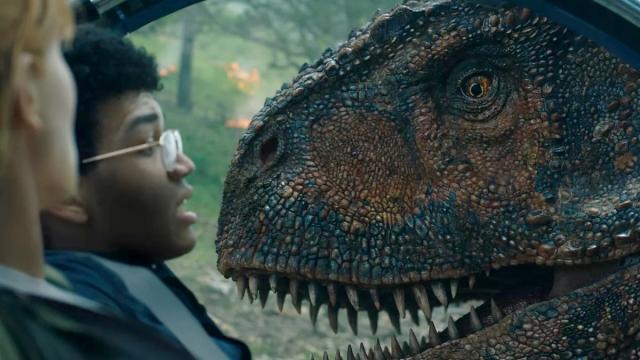Thanks to the definitely-factual documentary series, Jurassic Park and Jurassic World, we know dinosaurs were absolute savages. New research shows one carnivore, in particular, was such a violent lizard, it needed to replace its teeth every few months.
[referenced url=”https://gizmodo.com.au/2019/09/newly-discovered-japanese-duck-billed-dinosaur-was-a-cretaceous-beach-bum/” thumb=”https://i.kinja-img.com/gawker-media/image/upload/t_ku-large/dchnys5dd7qojluqjutu.jpg” title=”Newly Discovered Japanese Duck-Billed Dinosaur Was A Cretaceous Beach Bum” excerpt=”Introducing Kamuysaurus japonicus ” an entirely new genus and species of hadrosaur from Japan. The location of its fossilised remains suggests these majestic herbivores browsed ancient shorelines, expanding our knowledge of this wildly successful group of dinosaurs.”]
The Majungasaurus, which sounds like a name I’d make up for a dinosaur on Zoo Tycoon, was such a terror, it was replacing its teeth two-to-13 times faster than other meat-eating dinosaurs, according to a new PLOS ONE article, as spotted by 9News.
The Majungasaurus, which roamed the lands of modern day Madagascar around 70 million years ago, was an apex predator and its diet consisted of unsuspecting sauropods, like the Brontosaurus, as well as other Majungasaurus. It was displayed zero chill as far as dinos go.
Its sharp teeth were perfect for ripping off flesh, as you definitely do when you’re a huge Majunga, but problems arose when continued to chomp on its victims right down to the bone.
Apparently, herbivorous dinos replaced their teeth very frequently compared to meat eaters because they needed to chew vegetation. The new research suggests the Majunga probably adapted to replace teeth more quickly, like herbivores sharks, because the savage bastards, ever-unsatisfied, wanted to gnaw right down to the bone.
“This meant they were wearing down on their teeth quickly, possibly because they were gnawing on bones,” Michael D’Emic said, study author and assistant professor of biology at Adelphi University in New York.
“There is independent evidence for this in the form of scratches and gouges that match the spacing and size of their teeth on a variety of bones ” bones from animals that would have been their prey.”
The researchers explained they realised the existing teeth specimens had rings, similar to how trees indicate their age, but each ring signified something closer to a day rather than a year.
“I’m hoping this latest project spurs more people to study other species. I bet that will reveal further surprises,” D’Emic said. “And hopefully that will lead to a better understanding of how dinosaurs evolved to be successful for so long.”
And how successful they’d likely be if they were ever re-introduced…
